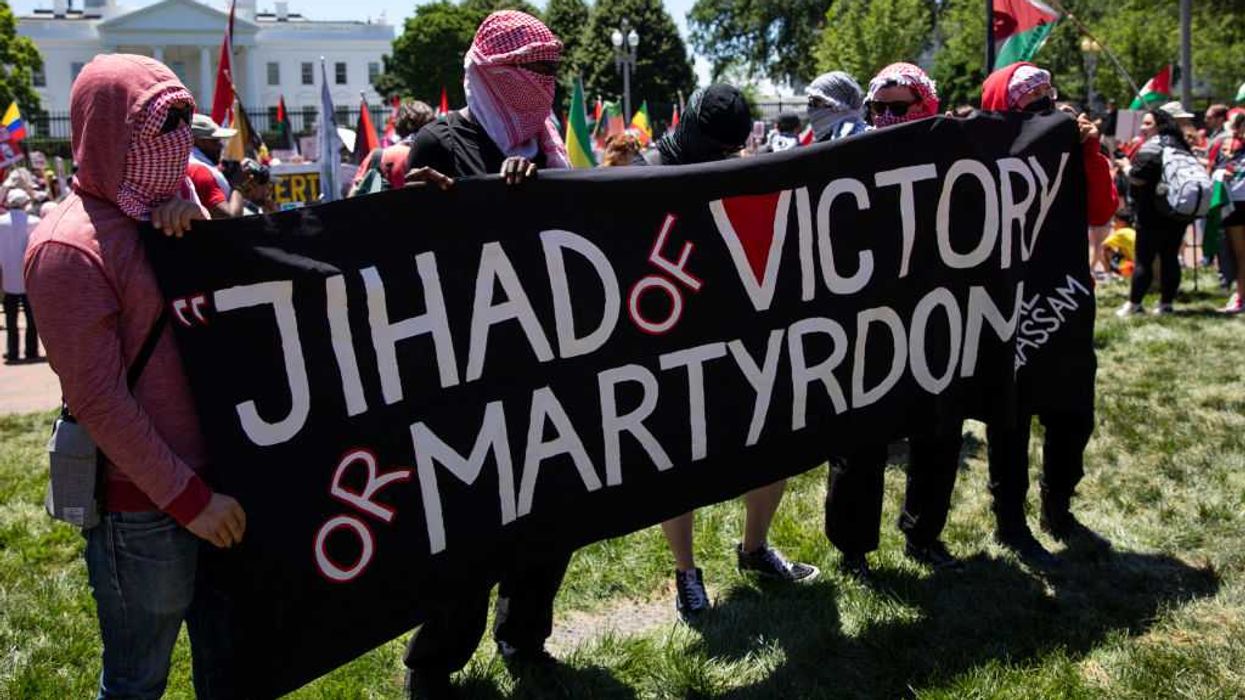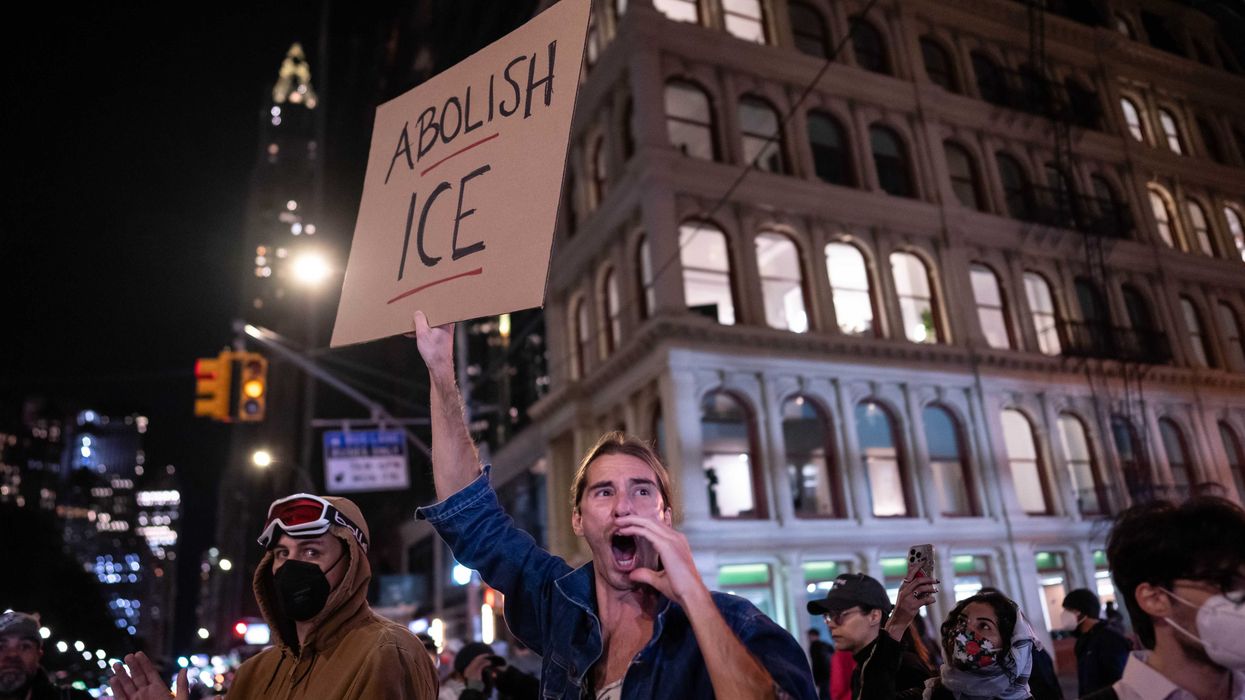DOC: First an update on what happened yesterday. Fifty-nine people now dead. The death toll at 59. The number injured 527. Five hundred twenty-seven people injured. Fifty-nine people dead at the hands of 64-year-old Stephen Paddock, who began shooting Sunday night from the 32nd floor of the Mandalay Hotel.
His brother said he was a millionaire and recently even won a $40,000 jackpot. The FBI said there's no apparent tie to international terrorism. Twenty-three guns were found inside the room, including at least one handgun. Some of the guns even had scopes. Thousands of rounds of ammunition still found there.
He had a camera mounted in the hotel room to record himself. Now, we've not heard reports if he actually recorded himself, if a video exists. Likely, we would never see if it is.
KRIS: I think that's a big fail. Not showing -- if there is a video out there, not showing that video is a big fail.
DOC: I think you're right.
KRIS: Just like they did not release the audio from the Pulse Nightclub, when he called. They show you just a little bit, but they don't actually show that he actually stayed on the line and you could hear back and forth.
DOC: Right. I think that actually helps make the case that this is a problem and we need to think this through and do some things.
KRIS: It does.
DOC: I don't think it's insensitive. But he did have a camera mounted in there.
Ammonium nitrate was found in his automobile. Ammonium nitrate is a component of some fertilizers. That's what this was, a fertilizer of ammonium nitrate. And that's also what was used partially to take down the federal building in Oklahoma City, at the hands of Tim McVeigh. It was ammonium nitrate fertilizer and also kerosene. We don't know how far along he was in a bomb-making process. I think it's fairly safe to say that if you shoot 600 people, that you probably -- if you had ammonium nitrate in your car, you probably were going to use it to create a bomb. It wasn't like, no, I just happened to have ammonium nitrate. It had nothing to do with that.
KRIS: I went to the store Lowe's.
DOC: On my way to kill people.
KRIS: I forgot to unload that up at the house.
DOC: The fertilizer, it should have been. I was going to garden tomorrow. I don't think that's what happened.
Inside his home in Mesquite, Nevada, about 80 miles from Las Vegas, they found another 18 firearms, several thousands rounds of ammunition, and more explosives.
His 62-year-old live-in girlfriend was in Asia at the time. Now, we had heard reports early on, Monday morning, that she was arrested, she was a person of interest, and that they had arrested her. That is not the case.
Law enforcement in Las Vegas says, if she returns to the United States, they, of course, will have some questions for her. But at this point, they say she was in Asia. We don't know if she had any knowledge of this. But she wasn't there when it happened. Officers, as they approached the hotel room to investigate what was going on, he opened fire on them. But these were Las Vegas police officers.
The officers that broke in and found him dead were S.W.A.T. officers. So it was a different team. So at first he did fire on them. He hit one officer in the leg. But then they backed off, waited for S.W.A.T. In the meantime, he killed himself. S.W.A.T. goes in and takes him down.
There was some confusion. And Kris and I all day yesterday afternoon could not understand why there were two windows out in the hotel.
Well, we know -- we knew that he was likely shooting out of them because it gave him an advantage. But was it two rooms? They were pretty far apart.
KRIS: Yeah, and one thing I told you, like, I don't want nobody from the FBI to search my computer, because it was three hours of searching floor plans. So I was -- Mandalay Bay floor plans. Thirty-second floor. Corner window.
DOC: Then followed up -- then different firearms and ammonium nitrate and Tim McVeigh. Yeah, we're on a bunch of radar screens today.
KRIS: Yeah, we triggered.
DOC: So we looked it up, and as it turns out, he had a suite that was at one end of the hotel, facing the north end of the strip. So if you were looking out his windows across diagonally at the venue that he fired upon, the window to the left -- again, looking out at the hotel looks north down the street. Then he had the window that was due east. The venue that he fired on would have been to the northeast of the building. The reason it was two buildings, it was either one giant suite with two bedrooms or a connecting room. Now, that's important because I had questions about, okay, if those are two separate rooms, which they even led with in some of the news, did he run down the hall? What was going on? How did --
KRIS: Yeah, then it goes back to, this is a 64-year-old man. Does he have the stamina to go back and forth?
DOC: To go back and forth. And what's going on? So they were at least connected. And he did set up -- they said he broke the glass of the windows, likely with a hammer-like device, which I don't know why he wouldn't just shoot through it, but okay. What is a hammer-like device, Kris?
KRIS: From what I'm thinking, you know those tactical hammers that police use when they're trying to break into a window? That's what I think.
But, you know, I want to give it to this guy. He was trying to be classy.
DOC: He didn't just through it. He wasn't a barbarian when he executed 59 people? Gotcha.
KRIS: No, no, no. He wanted to go out and do it the proper way.
DOC: Here's the bizarre and strange part of this: Still, we have no motive. What was his motive in this thing? It's really important. What was his motive?
While a lot of people are focusing on the method of murder, the guns. And melting down about the method. The how.
The why is much more important. The why is more important because that's how we stop future mass murderers like this. The how, you're never going to stop every way you can mass murder people. Take away all guns. What about the knives? Take away the knives. What about the golf clubs? Take away the golf clubs.
What about baseball bats? Take all of those away. What about heavy, blunt objects? What about -- what about rocks? What about your fists? You can pummel someone to death.
There are limitless ways you can murder, even on large scales. Remember, the most significant mass murders on American soil took place without guns.
9/11, it was box-cutters. Tim McVeigh, it was ammonium nitrate and kerosene. The attack on the school in Bathe, Michigan. The most deadly attack on a school in American history was a bomb. It was not guns. You can murder countless ways. So the how is not really as important as the why.
When you get the why, then you can start determining how we change it in the future. What makes somebody do something like this? Why do you do it?
This guy -- this dirtbag Stephen Paddock, does not fit any of the traditional profile. None of the obvious. What are the traditional profiles of a mass murderer like this?
KRIS: Loner.
DOC: Loner. Brooding Loner. Adam Lanza. Sandy Hook, right? The crazy, brooding loner. Everyone knew he had problems. Stole the gun from his mom.
KRIS: Crazy eyes.
DOC: Oh, crazy eyes. James Holmes in Aurora, right? He was a loner. And also had the crazy eyes. This guy is not a loner. He had a live-in girlfriend. He got along. He was social.
KRIS: He was a millionaire. You know, an alleged millionaire.
DOC: Okay. That brings up something else. A lot of these people, especially the ones that are radicalized, based on faith from the Middle East, the radical Muslims, are people that are radicalized partially because they are poor. They look at poverty and their own and they want to pretend -- why try to help everybody, it's not fair that some people -- what they really mean is, it's not fair that I don't have what other people have.
This guy may -- according to his brother -- was a millionaire. So he wasn't that. Young. That's another one. A lot of the Muslim terrorists, the extremist Muslims, they're young guys. Adam Lanza, James Holmes, young. This guy is 64.
KRIS: Yeah.
DOC: Sixty-four. That doesn't apply. Oh. Crazy. Certifiable -- no. Never been determined yet. A pilot's license. Which means he at least had a review of his mental state in order to get a pilot's license.
KRIS: Well, not just that, he was able to purchase guns from different salesmen. So how do you able -- if you're that crazy, how are you able to get different guns from different dealers?
DOC: The people who sold it to him, his family, his friends, anybody who knew him, nobody has come forth and said, "Oh, yeah. That guy was crazy."
KRIS: What about this one? Caring. He called his brother to check on his mom.
DOC: Check on his mom. How is mom doing? He doesn't fit any of the profiles. So what is going on? What happened?
I've come up with a couple of basic thoughts on this, as far as motive goes. That unless there's something we don't know -- remember the guy who shot up the tower in 1966 in Texas, in Austin. He had a tumor in his head, I think. Had been fairly normal. Wrote that even he didn't know why he was having these crazy thoughts --
KRIS: He started questioning himself.
DOC: Right. Outside of something like that or aliens or some grand conspiracy theory that he wasn't really responsible, the government did it, and just pinned it on him or something -- outside of that, likely the information we've gotten from his brother and everyone else is inaccurate. Maybe he had financial trouble. Oh, his brother said, no rabid political or religious viewpoint.
KRIS: Church.
DOC: Church, religion, none of those. Well, maybe his brother didn't know him as well. He was leading a double life or something. Maybe he had fallen on hard times financially.
Likely, some of the information we've gotten is not accurate.
I think he did it for political reasons. Purely, my speculation at this point. But we don't know why.
I want to get some of your calls on that. And tell me, what do you think it is? We'll speculate a little bit.

 AASHISH KIPHAYET / Contributor | Getty Images
AASHISH KIPHAYET / Contributor | Getty Images
 Harold M. Lambert / Contributor | Getty Images
Harold M. Lambert / Contributor | Getty Images Adam Gray / Stringer | Getty Images
Adam Gray / Stringer | Getty Images Anadolu / Contributor | Getty Images
Anadolu / Contributor | Getty Images